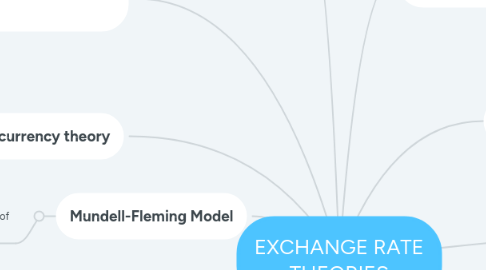EXCHANGE RATE THEORIES
por Luka Serov


1. The fixed parities and rates theory
1.1. (Graham, 1941)
2. The key currency theory
2.1. the cross rates of other currencies should be set in relation to the key currency.
3. Mundell-Fleming Model
3.1. The exchange rate is determined by the balance of payments dynamic.
4. The floating exchange rates theory
4.1. This theory, based on the monetarist views, provides market self- regulation of the exchange rate.
5. The theory of capital assets
5.1. The exchange rate is determined by the level of interest rates in different countries.
6. The elasticity theory
6.1. The effect of exchange rate changes on the foreign trade balance of the country depends on the exchange rate elasticity of exports and imports.
7. Source: http://econom.chnu.edu.ua/wp-content/uploads/2017/02/THE-EVOLUTION-OF-CURRENCY-RELATIONS.pdf
8. The purchasing power parity theory
8.1. The exchange rate should be set on the basis of purchasing power parity, depending on the level of domestic and international prices.
9. Keynes theory
9.1. the moving parities theory
9.2. the neutral rates theory
9.2.1. The basic tenet of the neutral rates theory is a need to set the exchange rate at a level which will provide a balance of payments equilibrium.

